There is no more evocative phrase to emerge from World War II than Afrika Korps. The name conjures up a unique theater of war, a hauntingly beautiful empty quarter where armies could roam free, liberated from towns and hills, choke points and blocking positions, and especially those pesky civilians. It calls forth a war of near-absolute mobility, where tanks could operate very much like ships at sea, “sailing” where they wished, setting out on bold voyages hundreds of miles into the deep desert, then looping around the enemy flank and emerging like pirates of old to deal devastating blows to an unsuspecting foe. Finally, it implies a bold hero, in this case Field Marshal Erwin Rommel, a noble commander who fought the good fight, who hated Hitler and everything he stood for, and who couldn’t have been farther away from our stereotyped image of the Nazi fanatic. Everything about him attracts us--the manly poses, the out-of-central-casting good looks, even the goggles perched just so. Placing Rommel and his elite Afrika Korps to the fore allows us to view the desert war as a clean fight against a morally worthy opponent. It was war, yes, but almost uniquely in World War II, it was a "war without hate."
It’s an attractive image all around, and it is unfortunate that practically all of it is false. The desert was hardly a haven of beauty or romance. It was a pain, and fighting in it was a nightmare for both sides. Far from letting the respective tank fleets roam free, the desert chained them irresistibly to their supply lines, and a single failed supply convoy or a lost column of trucks could stop an entire offensive dead in its tracks. Contrary to the alleged mobility of desert warfare, both sides would spend far more time in static defensive positions, often quite elaborate, then they would launching tank charges.
That leaves us with Rommel. Here, too, we should challenge the mythology. He was hardly apolitical. His entire career had been based on Hitler's favor, and we might reasonably describe his attitude toward the Führer as worshipful. He was Hitler's fair-haired boy, a young officer repeatedly promoted over more senior candidates. He was a media creation. Nazi propaganda painted him not only as a garden-variety hero, but as a model National Socialist and Aryan, a man who could overcome stronger enemies through the sheer force of his will. He was not merely a passive bystander to the hype; he was an active accomplice. He loved nothing better than having a camera crew along with him on campaign, and he would regularly order scenes to be reshot if his posture was insufficiently heroic or the lighting had not shown him to best advantage. As is often the case, his relationship to the media was both self-serving and self-destructive. During the years of victory, the German propaganda machine used him as an example to the nation. When things went sour, he became a diversion from the increasingly bad news on other fronts. Finally, when he was no longer useful for any purpose at all, the regime dropped him altogether and eventually killed him.
Yes, the reader might respond, but surely we are on firmer ground with regard to his military skill! After all, no less a figure than British Prime Minister Winston Churchill called him “a great general” on the floor of the House of Commons. Even here, it is possible to make a counterargument. Rommel’s daring exploits at the head of the Afrika Korps (later enlarged and renamed Panzerarmee Afrika) were exciting, to be sure, but many officers in his own army reckoned them as an ultimately valueless sideshow. His disinterest in the dreary science of logistics, his “bias for action,” his tendency to fly off wherever the fighting was hottest are qualities that may make for an exciting movie, but they are problematic in an army commander under modern conditions, and they all contributed materially to the disaster that ultimately befell him and his army in the desert.
With these thoughts in mind, let us take a short operational tour of the Afrika Korps at war. The point is not to smash any particular idols, but rather to restore some balance to a discussion that has been sorely in need of it.
When Rommel arrived in Africa, he brought with him a fully realized art of war. He’d won a Pour le Mérite (the famed “Blue Max”) for a series of nail-biting mountain exploits in the 1917 Caporetto campaign; he had been a very popular tactical instructor at the Dresden Infantry School between the wars; he had commanded one of the army’s precious Panzer divisions (the 7th) during the 1940 campaign in the West. In France, Rommel had behaved more like an 18th century hussar cut loose on a raiding mission than a divisional commander. He led from the front, braved enemy fire on numerous occasions, and turned off his radio from time to time rather than risk receiving orders to rein himself in. He drove forward so rapidly that the 7th Panzer became known as the “ghost division” for its tendency to drop off the situation maps and reappear where least expected. There were many in the German high command, including the chief of the General Staff Franz Halder, who didn't much appreciate Rommel running amok, but as one analyst put it, “it was impossible to court martial such a successful general, so Rommel instead got the Ritterkreuz."
It would be the same in Africa. Rommel arrived in February 1941 with fairly mundane orders to act as a Sperrband, a “blocker” to bolster the Italians after their mauling at Beda Fomm. The force he led was appropriately tiny: the reconnaissance battalion and an antitank detachment of the 5th Light Division (soon renamed the 21st Panzer Division). The rest of the division was still en route to Africa, and a second division, the 15th Panzer, would not arrive completely until the end of May.
Rommel had his orders, but he had ignored orders in the past and been decorated for it. With British forces stripped to fight an exceedingly ill-advised campaign in Greece, he carried out a quick personal reconnaissance in his trusty little Fieseler Storch airplane, then launched an offensive in concert with his Italian partners (Ariete armored division and the infantry divisions of X Corps, Bologna and Pavia). He penetrated British defenses at El Agheila on March 24th, then drove on to Mersa el Brega on March 31st, pausing only long enough to take (and ignore) a number of radio messages from Berlin and Rome warning him not to do anything rash. Finally, he smashed the British defenders at Agedabia (elements of the green 2nd Armoured Division, equipped partially with captured Italian M13/40 tanks), pinning them in front with the infantry of 5th Light Division while dispatching his Panzers on a ride around the open desert flank to the south, the first use of a tactic that would become his signature move.
These three tiny encounters, none of them exceeding regimental strength, were enough to unhinge the entire British defensive position in Cyrenaica. Rommel now expanded his "reconnaissance in force" into a general offensive, although the forces involved were still minuscule. One column headed up the coast road towards Benghazi, while two more sliced across the Cyrenaican bulge, scooping up a mountain of British supplies at Msus and Mechili. The British rear was in chaos. On April 6th, a German motorcycle patrol actually captured the British commander in Cyrenaica, General Philip Neame, as well as General Richard O'Connor, the victor of Beda Fomm. By April 11th, the Germans had surrounded the coastal fortress of Tobruk while smaller formations pressed on to the east, taking Bardia and reaching the Egyptian border at Sollum and Ft. Capuzzo.
This was top speed maneuver, and the distances were vast, with the Afrika Korps covering over 600 miles in less than two weeks. An amazing feat, to be sure, but may we not legitimately ask, Six-hundred miles to where? Rommel had lunged from central Libya to the Egyptian border in a great bound, but now he had an unconquered fortress sitting in his rear, a serious threat to his lines of communication and supply. Two hastily marshaled attempts to storm Tobruk went badly wrong. In the "Easter battle" (April 10th-14th) and the "battle of the Salient" (April 30th-May 4th), the defenders of the 9th Australian Division hung tough. Minefields channeled the German attacks, while direct fire from artillery, antitank guns, and supporting tanks shot up the assault forces quite badly and killed General Heinrich von Prittwitz, commander of 15th Panzer Division.
The very presence of an unconquered Tobruk rendered the drive across the desert pointless. Indeed, for all the fame it had brought Rommel in the world press, this first campaign won him few friends among command echelons in Berlin. General Halder was especially unimpressed. Rommel, he wrote, “storms around all day long with formations strewn all over the place.” The man had apparently “gone insane.” There was some justice to the complaint. A German division-plus had overrun territory--a vast wasteland, to be precise--but it hadn't really won anything. There had been no battle of annihilation, no Kesselschlacht, nor could there have been. The Afrika Korps had come a long way, but now sat precariously on the edge of nowhere. Although Rommel and his command had shown a satisfying level of aggression, something the entire officer corps understood, most of them saw his drive to the Egyptian border as a misfire.
Subsequent operations deserve the same cold eye. Both sides spent the summer rebuilding, replacing, and reinforcing, but by and large, the British were able to do it more rapidly. In November 1941, British 8th Army (General Alan Cunningham), launched Operation Crusader, a relief attempt of Tobruk (although to say that the tiny port was “under siege” is yet another example of myth-making in the desert war). Crusader led to hard fighting with heavy losses on both sides. Rommel’s bold decision to break contact and surge deep into the British rear (the “drive to the wire” on the Egyptian border) was an exciting moment, to be sure. In the course of this wild ride the Panzers overran, in quick succession, the headquarters of the XXX Corps, 7th Armoured Division, 1st South African Division, and the 7th Armoured Brigade, unleashing panic as he went.15 Ultimately, however, the drive to the wire was yet another drive to nowhere, and had little impact on the operational situation. With his tank strength near zero and his (largely Italian) infantry well blooded, he had no choice but to retreat back to where he had start-ed, El Agheila.
By now, the dynamic of the desert war was well established. There was an iron logic at work, and neither side could escape its grip. Long advances did not simply take you away from your railhead, they took you entire time zones from it. Supply became not just a problem, but the problem. Rommel was far more dangerous at El Agheila, relatively close to Tripoli, than he was on the Egyptian wire, six-hundred miles to the east. Likewise, the British were never more dangerous than when they were fighting with Egypt at their back, and never more helpless than when they had just overrun Cyrenaica.
It should not be surprising, then, that Rommel soon turned the tables on the Allies once again. In January 1942, after spending a few short weeks regrouping his forces after their long retreat, Rommel was back on the offensive. Again, in an eerie repeat of the 1941 campaign, the British had stripped their front before him. Last year it had been the Balkans; this year it was to shore up Britain's collapsing position in the Far East, then reeling under a series of Japanese hammer blows. For both sides, it seemed, there was always someplace more important than Africa.
Rommel's second offensive bore quick fruit. Once again, there was a green unit in his path, the 1st Armoured Division. Rommel's opening blow tied it in knots. A regimental-sized task force, Group Marcks, got around its right flank near the coast, while the mass of Afrika Korps looped around the left. Having German Panzers prowling around in the rear was enough to send 1st Armoured reeling back. In the next two weeks Rommel reconquered Cyrenaica. It was even easier than the first time, perhaps the greatest hussar raid of all time. This was low-intensity fighting of the Kampfgruppen variety, without a fully formed division in sight. It included few battles and generated minimal casualties, and by February 6th, Rommel stood on the Gazala line, just east of the Cyrenaican bulge and thirty-five miles west of Tobruk.
Here, the hyper-movement of the desert war ground to a halt. Both sides had wasted themselves racing back and forth and were, for the moment, incapable of further action. For nearly four months, the opponents sat, dug in, and glowered at one another. The Gazala position came to bear all the hallmarks of Stellungskrieg, or static warfare: trenches and rifle pits, barbed wire and machine gun nests. For the British, fortified "box-es," dense 360-degree concentrations of tank obstacles and mines, came to dominate the front, with the gaps between them protected by great "mine marshes."
Here, on the Gazala line, Rommel would finally win a real victory, not the meaningless to-and-fro of the "Benghazi sweepstakes." On May 26th, 1942, Panzerarmee Afrika went over to the offensive, a frontal assault by the Italian infantry divisions to pin the British in place. Once that had taken effect, Rommel carried out the most audacious move of his career, launching his entire mechanized force--five full divisions, thousands of vehicles, and virtually every Axis tank in the order of battle--on a deep end run around the British flank. It was a solid block of armor nearly fifteen miles on a side stood on the British flank. The "armored phalanx" is a cliché of military history, but this was the real thing: Italian XX Motorized Corps, the Afrika Korps, and the 90th Light Division.
By the end of their approach march, all of them were perched on the British left flank, and the opening of the attack came as near to the Platonic ideal of “surprise” as any operation in the war. At 0700 hrs, this immense force crashed into the fortified box at Retma. It was an amazing scene. Sitting out in the sunshine of a lovely May morning, the defenders looked on with curiosity as a dust cloud appeared on the horizon. By now, they’d all seen strange weather patterns and storms blow up out of nowhere. This one, however, suddenly clarified itself into something worse: tanks, tanks, and more tanks, vehicles of every description, sailing out of the dust. It was, one of them said, “the whole of Rommel's command in full cry straight for us.” The same thing happened on both flanks of Retma. To the east, near Bir Gubi, lay the 7th Motorised Brigade. Half the unit had been given some well-earned rest and recreation and the men were swimming in Tobruk harbor that fateful morning. West of Retma, 3rd Indian Brigade was caught equally unprepared. Its commander, General A. A. E. Filose, radioed that there was “a whole bloody German armored division” bearing down on him. He was actually seeing Italian tanks of the Ariete division, but it was early in the morning so we can forgive Fi-lose his imprecision. Both brigades, along with the Retma box, were overrun with hardly any fighting in the opening minutes. The final entry in 3rd Indian’s war diary was chilling: “Positions completely overrun,” it said, “with enemy tanks in the box.” Next came the turn of 4th Armoured Brigade. Strewn all over the battle area, it rushed to the aid of 7th Motorised Brigade, and was overrun by the onrushing 15th Panzer Division. Then, 22nd Armoured Brigade rode to the relief of 4th Armoured, and it too went down in flames. By noon, the British left wing in the desert was in shreds.
Once past the initial shock, however, 8th Army dug in its heels. By now, the British finally had an adequate tank, the M3 Grant (courtesy of U.S. Lend-Lease). Treated cavalierly by World War II historians, it was far superior to anything 8th Army had yet fielded. Sure, it was ungainly and clumsy, and yes, it really did present a monstrous 9-foot, 3-inch tall target profile to German fire. On the plus side, however, its thick armor made it impervious to just about anything but a direct hit from an 88 mm antiaircraft gun. It was also one of the most heavily armed tanks of the day, packing two forms of main armament: a short-barreled 75 mm gun in a fixed mounting (or "sponson") in the hull and a 37 mm gun in the turret. Within minutes of the German eruption onto the British flanks, one Panzer after another was being drilled at seemingly impossible ranges, and soon, Rommel’s attack had come to a standstill.
By the end of the first day, the Panzers had formed up into a laager behind the British lines, and in the next days, Rommel had them launching an attack backwards, i.e. towards their own starting positions, in order to open up a supply line. It was a marvelous improvisation, and enough to flummox the British, who preferred to fight on one front at a time rather than three. Soon the Panzers had broken out, fighting a swirling action around the nondescript terrain feature known as “Knightsbridge” and driving on Tobruk. Last year’s “fortress” was now virtually undefended, and the Panzers overran it in a sin-gle day, slicing the unfortunate 2nd South African Division to ribbons. A few days previ-ously it had been holding a position in the “rear area,” but now suddenly found itself de-fending the “front.” The young divisional commander, General H. B. Klopper, actually radioed back the understatement of the century: "Situation not in hand," he said.
No, it certainly wasn’t. The Gazala-Tobruk sequence was the greatest victory of Rommel’s career, not merely a triumph on the tactical level, but an operational level win, a victory that even General Halder could love. Call it Rommel’s Rule #1, which is still a recipe for success today: “Be sure to erupt into your opponent’s rear with an entire Panzer army in the opening moments of the battle.”
Even here, however, let us be honest. Smashing 8th Army at Gazala and taking tens of thousands of prisoners at Tobruk did little to solve the strategic problem. Unless the British were destroyed altogether, they would reinforce to a level the Axis could not match. Many later analysts argue that the Panzerarmee should have paused now, waited until some sort of combined airborne-naval operation had been launched against Malta to improve the logistics, and only then acted. Such arguments ignore the dynamic of the desert battle, however; they ignore the morale imperative of keeping a victorious army in motion; above all they ignore the personality of Rommel himself.
Pause? Halt? Wait? Anyone who expected Rommel to ease up on the throttle clearly hadn’t been paying attention. Instead, the Panzerarmee vaulted across the border into Egypt with virtually no preparation. To Rommel, to his men, and even to Hitler and Mussolini, it must have looked like a great victory lay just over the next horizon: Cairo, Alexandria, the Suez Canal, the British Empire itself.
In reality, it is possible today to see what the great Prussian philosopher of war Karl von Clausewitz once called the “culmination point”--that moment in every campaign when the offensive begins to lose steam, run down, and eventually stop altogether. The Panzerarmee was exhausted, its equipment was worn out and in desperate need of repair. Captured British stores and vehicles had become its life-blood, Canadian Ford trucks in particular. The manpower was breaking down. A chronic shortage of potable water had put thousands of soldiers on the sick rolls. Colonel Siegfried Westphal, the Panzerarmee’s operations chief (the “Ia,” in German parlance), was yellow with jaundice. The army’s intelligence chief (the “Ic”), Colonel Friedrich Wilhelm von Mellenthin, was wasting away with amoebic dysentery. Rommel had a little of both, as well as a serious blood-pressure problem (no doubt stress-induced) and a chronic and bothersome sinusitis condition. While it would be easy to view all these illnesses as simple bad luck, they were, in fact, the price Rommel and all the rest of them were paying for fighting an overseas expeditionary campaign with inadequate resources.
The same might be said for the rest of the campaign. The Panzerarmee made an ad hoc attempt to break thought the British bottleneck at El Alamein in July. It failed, coming to grief against British defenses on the Ruweisat ridge. There was a second, more deliberate, attempt in August. After an initial breakthrough, it crashed into strong British defenses at Alam Halfa ridge and it, too, failed. After yet another long pause, a “third battle of El Alamein” began in late October. This time, it was the well supplied British on the attack, however, and they managed to smash through the Panzerarmee and drive Rommel and company back, not hundreds of miles, but more than a thousand, out of the desert altogether and into Tunisia. There was still fighting to be done in Africa, but the “desert war” was over.
It isn’t easy, but we must strip this entire operational sequence of the romance and legend in which we have wrapped it. In North Africa, a hard-driving commander and a handful of German divisions who yielded to no one in terms of “fighting strength” (Kampfpkraft) became enmeshed in a campaign for which they were singularly unsuited: one that was far-flung, logistics-heavy, and reliant on naval supply (an unreliable foreign navy, at that). That they had their successes at first should surprise no one; the Wehrmacht was still undefeated against the British army at this point in the war. That they would eventually succumb in the long run to two world empires--one (the British) waning, one (the Americans) just beginning to wax--should equally surprise no one. At Gazala, those American Grant tanks had been the margin of survival for the British 8th Army, even after the awful shock of the opening. At “Third Alamein,” General Bernard Law Montgomery spearheaded his decisive offensive with another technological marvel, at least by desert standards, the U.S. M4 Sherman. Later analysts malign the Sherman for its performance in the European theater; such a negative assessment would have been surprising to those frantic German and Italian tankers facing the Sherman at Alamein. The Wehrmacht would boast of its Kampfkraft until the end of the war, but it would look increasingly hapless in the face of the materiel and logistical superiority of its combined enemies.
During the war, Rommel and the Afrika Korps acquired a reputation for invincibility. Article after article in the German press equated Rommel with the great Prussian- German captains of the past: Friedrich Wilhelm von Seydlitz, Gebhard Leberecht von Blücher, Helmuth von Moltke the Elder, Paul von Hindenburg. We understand this process today, and it’s fair enough. Josef Goebbels and his propaganda machine had a job to do. Nearly seventy years after the crushing German defeat at El Alamein, however, it is time to free ourselves from the grip of Dr. Goebbels. While we all love our legends, we should admit that Rommel and the Afrika Korps came much closer to a decisive victory in fantasy than they did in fact.
This piece originally appeared in MHQ magazine, Summer 2012.
Robert Citino, PhD
Robert Citino, PhD, is the former Samuel Zemurray Stone Senior Historian in the Jenny Craig Institute for the Study of War and Democracy.
Cite this article:
MLA Citation:
APA Citation:
Chicago Style Citation:
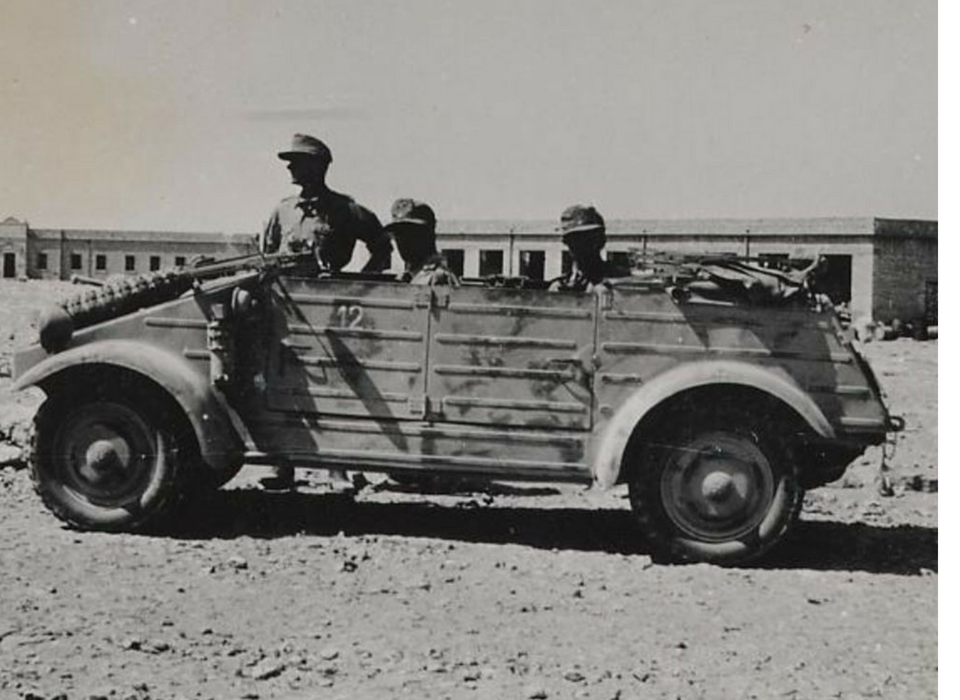
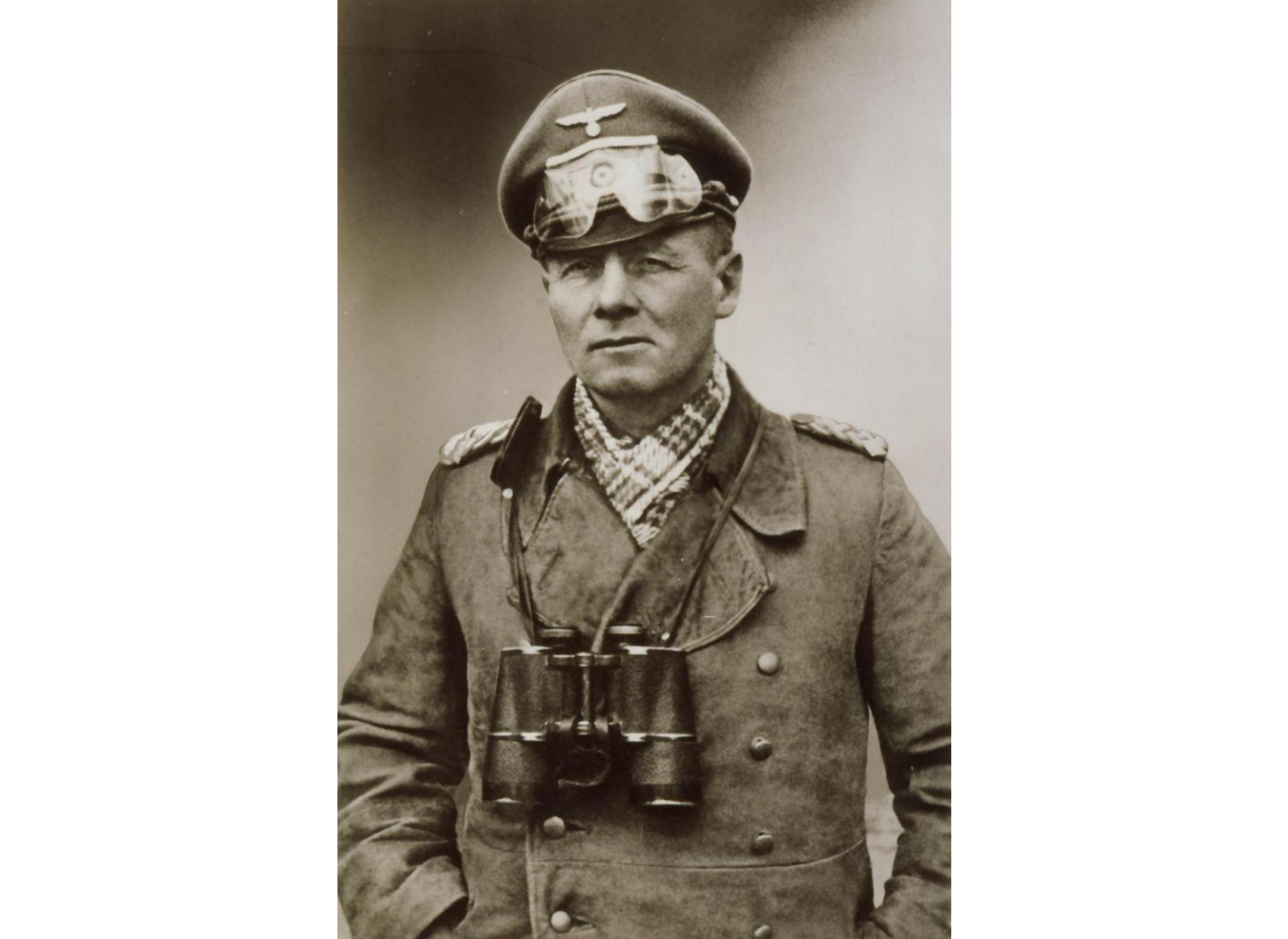
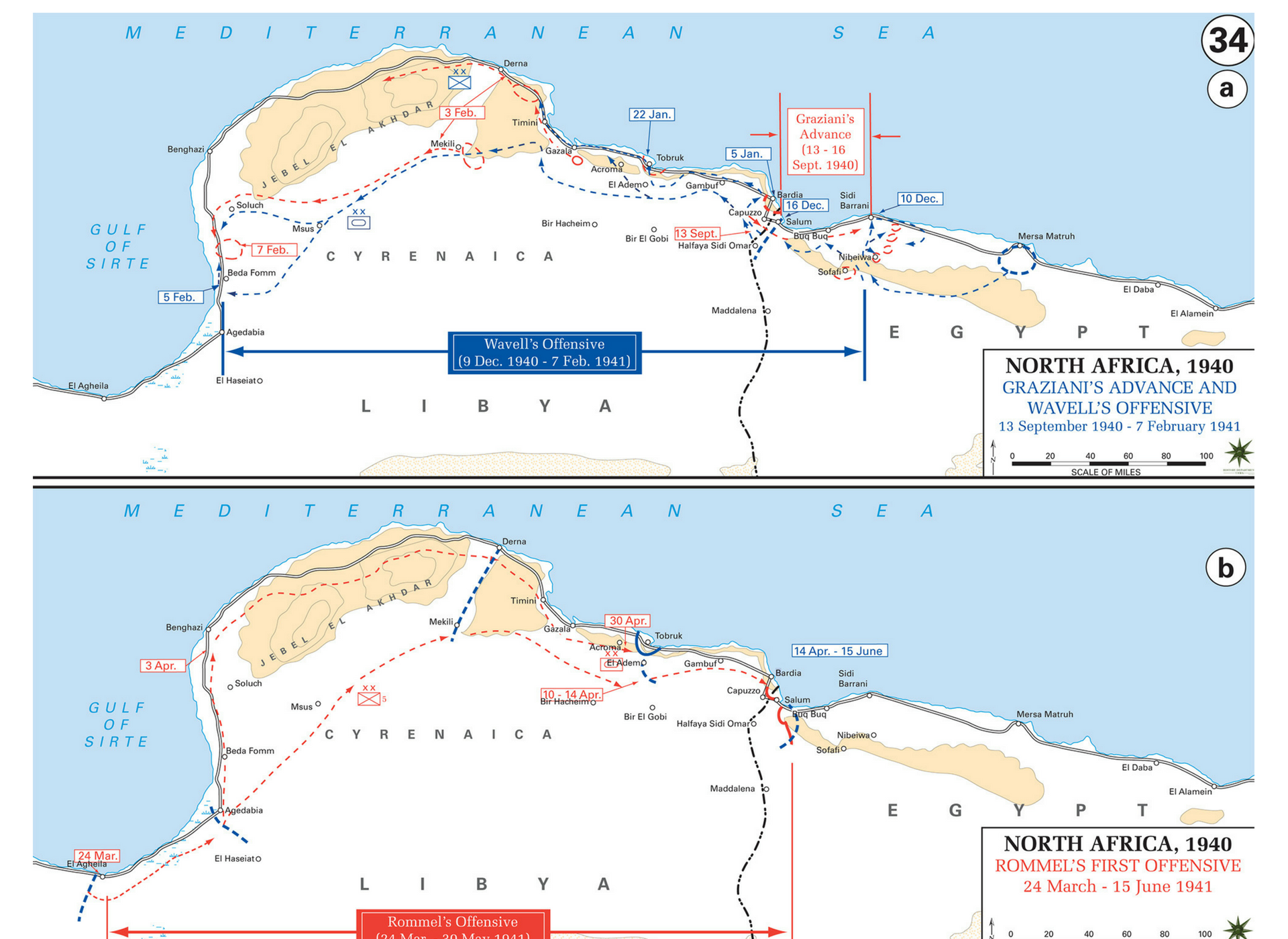
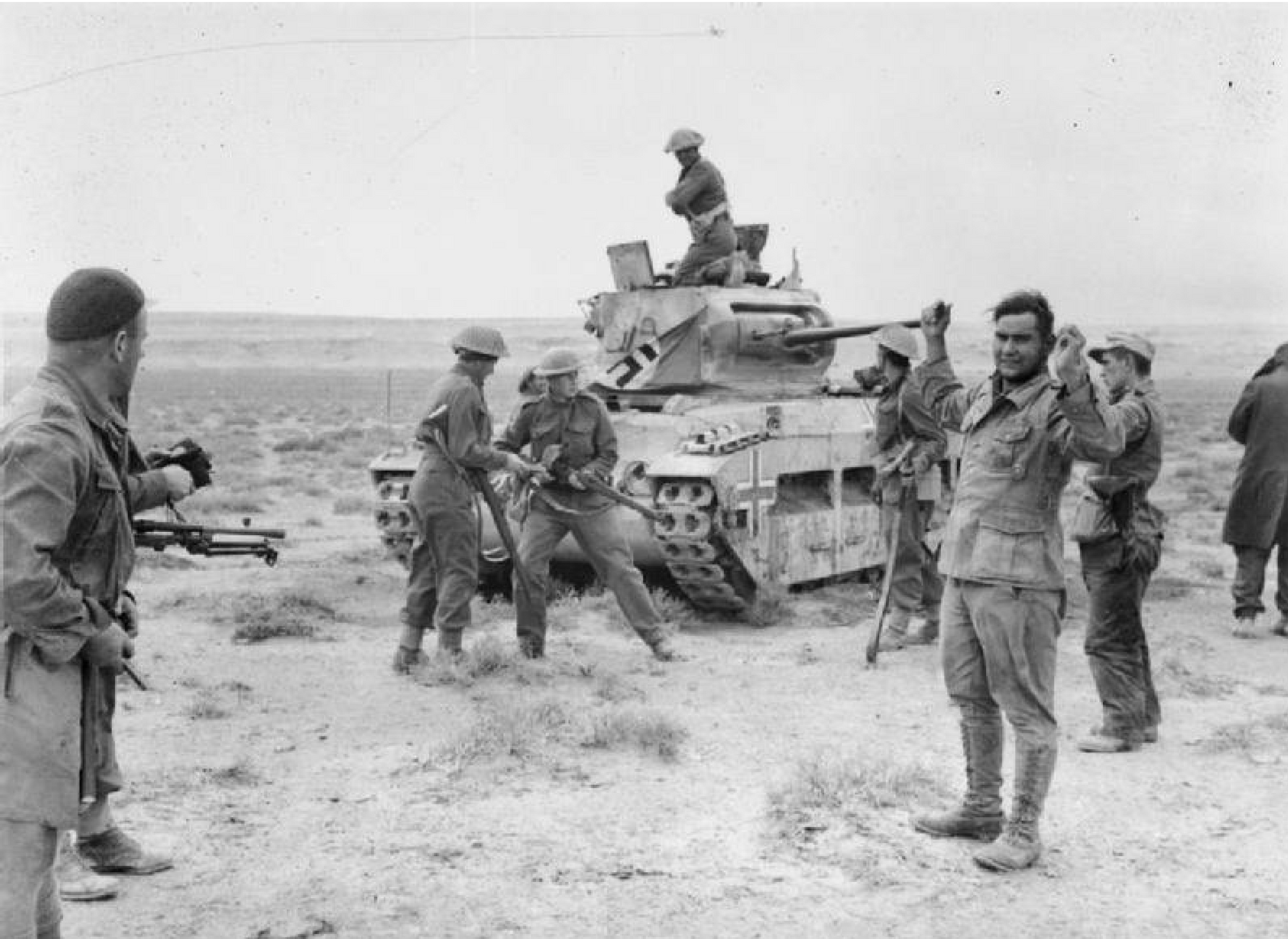
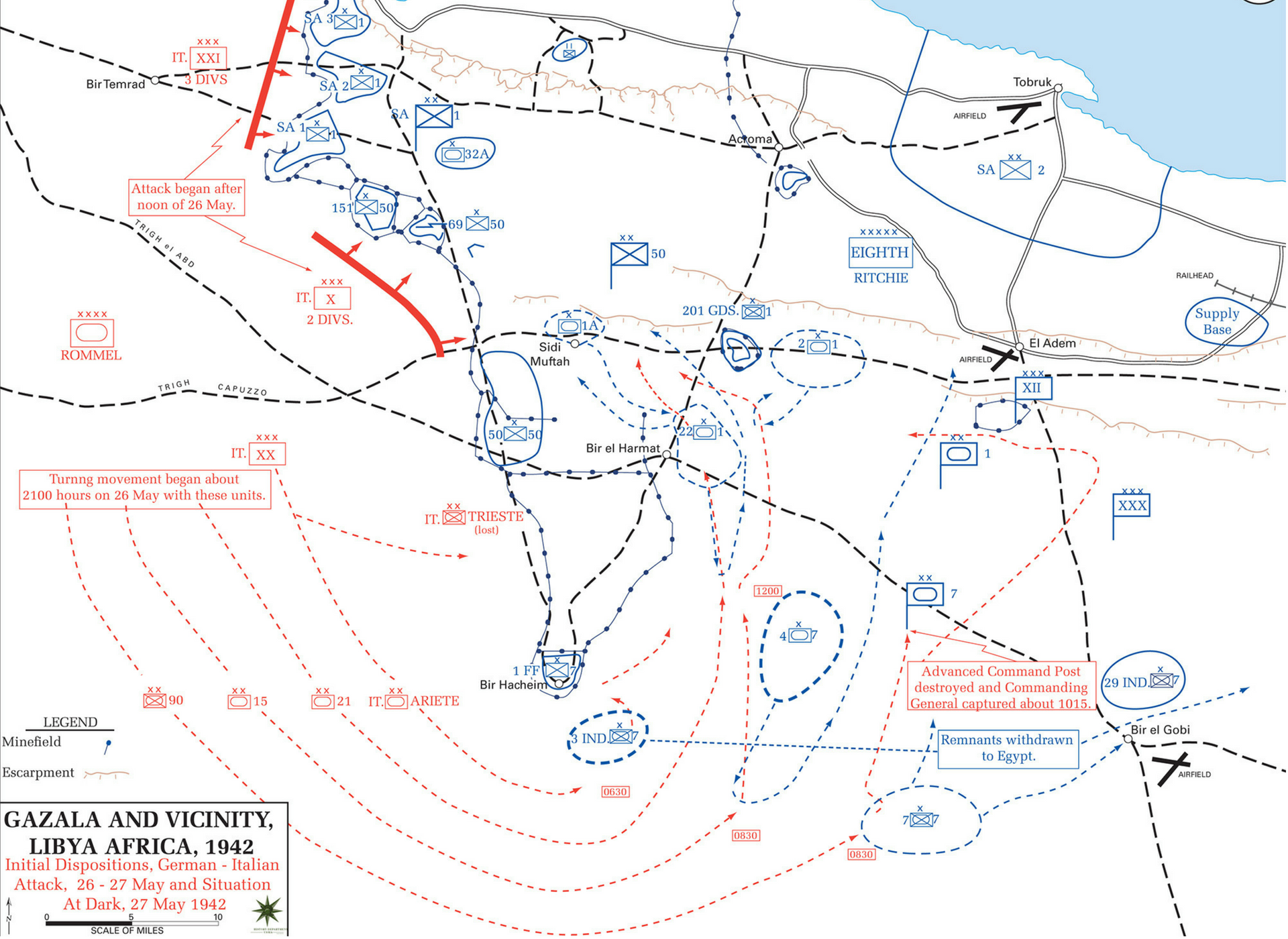
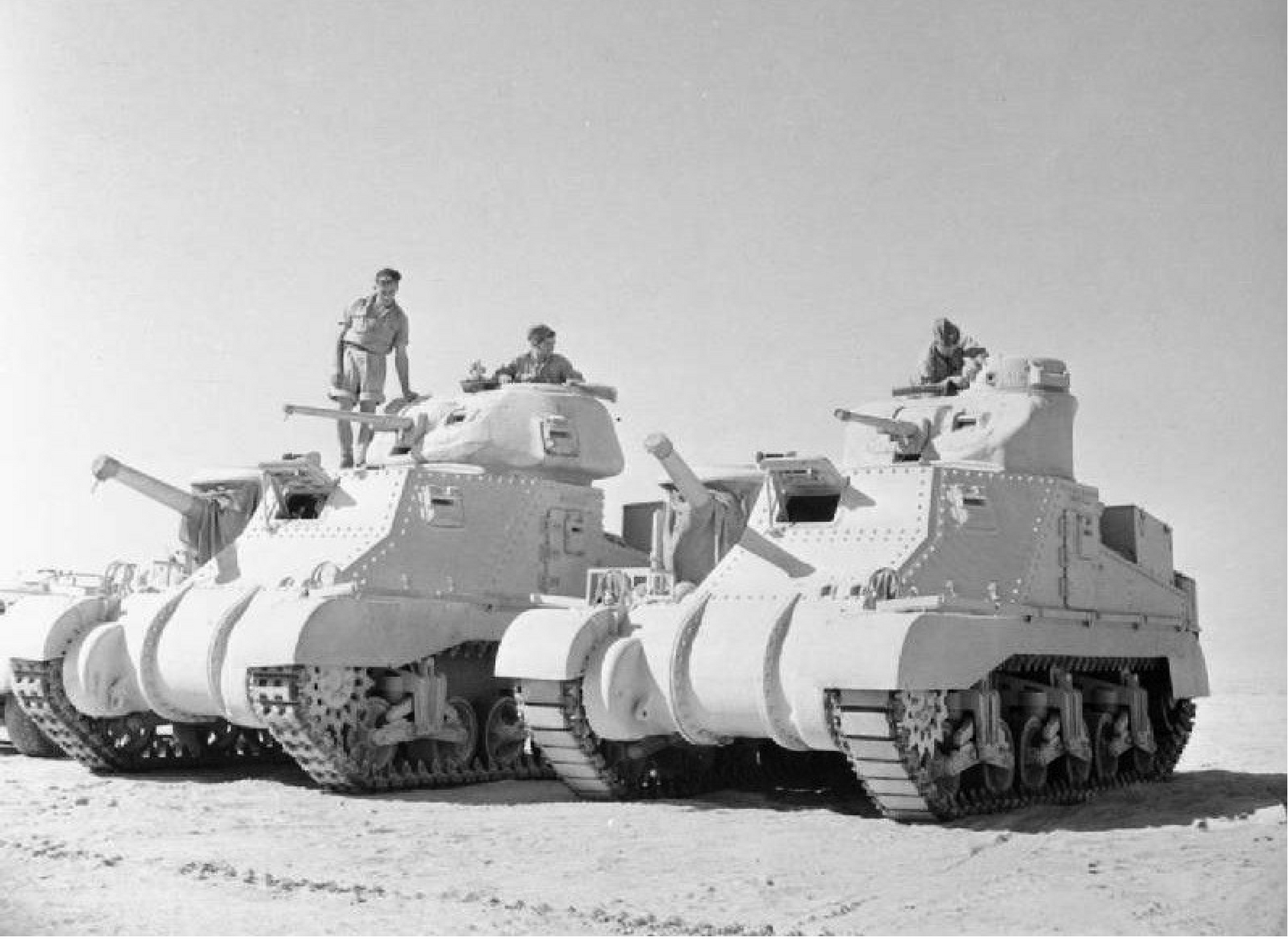
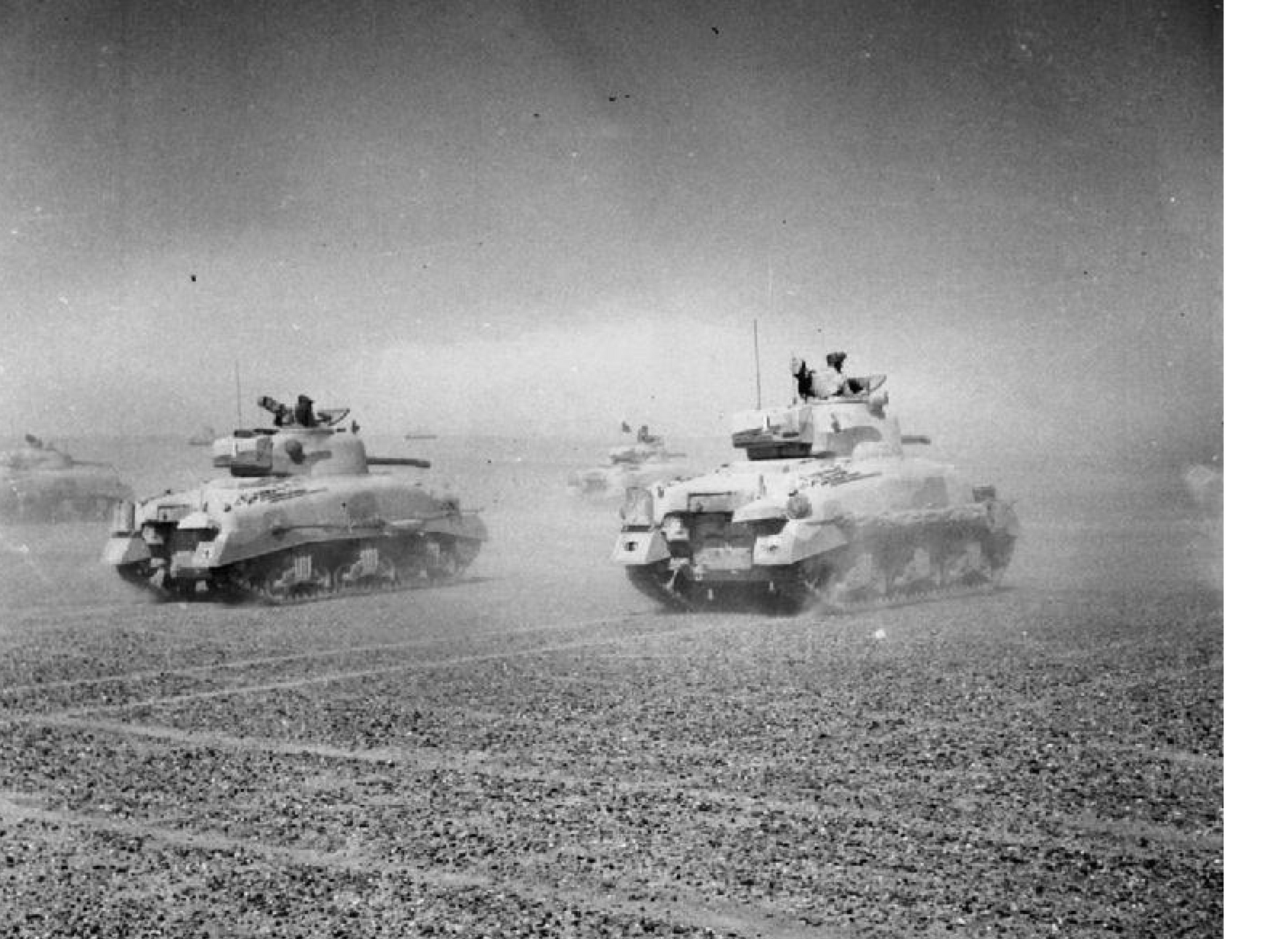




![Max Fuchs, New York City cantor, sings as Rabbi Sydney [sic] Lefkowitz, Richmond, VA, conducts the first Jewish services from Germany.](/sites/default/files/styles/max_650x650/public/2025-10/image1.jpg)



